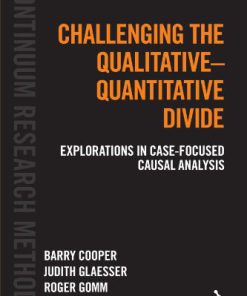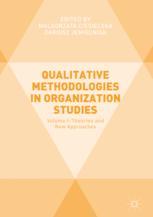Ratings Critical Analysis and New Approaches of Quantitative and Qualitative Methodology 1st edition by Peter 3030562433 9783030562434
$50.00 Original price was: $50.00.$25.00Current price is: $25.00.
Ratings Critical Analysis and New Approaches of Quantitative and Qualitative Methodology 1st edition by Peter Brusov – Ebook Instant Download/Delivery ISBN(s): 3030562433, 9783030562434

Product details:
- ISBN 10: 3030562433
- ISBN 13: 9783030562434
- Author: Peter Brusov
This book presents new methodologies for rating non-financial issuers and project ratings based on the BFO (Brusov-Filatova-Orekhova) theory of capital cost and structure, and its perpetuity limit (Modigliani-Miller theory), as well as modern investment models created by the authors. It first provides a critical analysis of the methodological and systemic shortcomings of the current credit ratings of non-financial issuers and project ratings. In order to increase the objectivity and accuracy of rating assessments, it then modifies the BFO theory for companies of arbitrary age as well as and the perpetuity limit (Modigliani-Miller theory) for rating needs. The authors also incorporate the financial indicators used in the rating methodology into both the BFO theory and the Modigliani-Miller theory.
Table of contents:
1. Introduction
2. The Importance of Rating and the Disadvantages of Existing Rating Systems
Part I. Corporate Finance Theories Used in Ratings and in Rating Methodologies
3. Capital Structure: Modigliani–Miller Theory
4. Modification of the Modigliani–Miller Theory for the Case of Advance Tax on Profit Payments
5. Modern Theory of Capital Cost and Capital Structure: Brusov–Filatova–Orekhova Theory (BFO Theory)
Part II. Ratings and Rating Methodologies of Non-financial Issuers
6. Application of the Modigliani–Miller Theory in Rating Methodology
7. Application of the Modigliani–Miller Theory, Modified for the Case of Advance Payments of Tax on Profit, in Rating Methodologies
8. Application of Brusov–Filatova–Orekhova Theory (BFO Theory) in Rating Methodology
Part III. Project Ratings
9. Investment Models with Debt Repayment at the End of the Project and their Application
10. Investment Models with Uniform Debt Repayment and Their Application
11. A New Approach to Ratings of the Long-Term Projects
12. Ratings of the Investment Projects of Arbitrary Durations: New Methodology
13. Ratings of Investment Projects of Arbitrary Duration with a Uniform Debt Repayment: A New Approach
Part IV. New Meaningful Effects in Modern Capital Structure Theory (BFO Theory) Which Should Be Accounting in Rating Methodologies
14. The Golden Age of the Company (Three Colors of Company’s Time)
15. A “Silver Age” of the Companies. Conditions of Existence of “Golden Age” and “Silver Age” Effects
16. Inflation in Brusov–Filatova–Orekhova Theory and in Its Perpetuity Limit–Modigliani–Miller Theory
17. A Qualitatively New Effect in Corporate Finance: Abnormal Dependence of Equity Cost of Company on Leverage Level
18. The Impact of Taxing and Leverage in Evaluation of Capital Cost, Capitalization of the Company and Issued Ratings
19. Recommendations to International Rating Agencies (Big Three (Standard & Poor’s, Fitch, and Moody’s), European, and National Ones (ACRA, Chinese, etc.))
20. Conclusions
People also search:
analysis vs critique
rapid critical appraisal of evidence-based guidelines
a guide to critical appraisal of evidence
a critical approach
critical appraisal of systematic review
You may also like…
Mathematics
Education Studies & Teaching - School Education & Teaching
Mathematics
Multi Method Social Science Combining Qualitative And Quantitative Tools Jason Seawright
Relationships & Lifestyle - Psychological Self-Help
Empirical Political Analysis Quantitative and Qualitative Research Methods Richard C. Rich
Politics & Philosophy - Social Sciences
Qualitative Analysis: Eight Approaches For The Social Sciences Margaretha Järvinen
Politics & Philosophy
Politics & Philosophy - Social Sciences
Business & Economics












